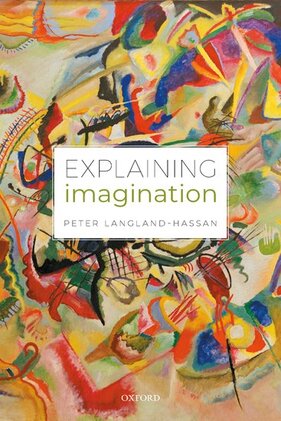
This leads to a second means of defense. Even when we are deeply immersed in a fiction, we do not usually respond to the fiction just as we would were the events non-fictional. Jonathan’s own careful arguments to this effect in earlier work (Gilmore, 2011) were influential in the development of my own thinking on these issues. In Explaining Imagination, I gave the example of being upset when a favorite character in The Wire is murdered. As upset as I was, I retained some distance on the event. I did not react with the absolute horror I would have if I’d thought the character were non-fictional and that he was actually being murdered. One way to account for this degree of distance is to build ‘in the fiction’ operators into the beliefs and desires responsible for the emotions. Another example I gave was of standard reactions to alien-invasion and similar science-fiction films. As immersed as we may be in such fictions, our emotional reactions are not all that similar to what they would be if we took the events to be actual. We should not then feel compelled to copy the precise contents of the beliefs and desires we would have if we thought the events to be actual into the mental states at work in fiction consumption. A reasonable alternative is to build ‘in the fiction’ operators into the responsible beliefs and desires.
Many thanks to Jonathan Gilmore for his very stimulating commentary. Jonathan proposes that the kinds of mental states I invoke to explain fiction consumption may in fact impede one’s ability to become immersed in a fiction. To be immersed in a fiction, I argue, is to be strongly emotionally engaged by it. Such engagement, I argue, typically result from pairs of beliefs and desires involving “in the fiction” operators—such as a belief that, in the fiction F, p and a desire that, in the fiction F, not p. The general problem Jonathan sees is that beliefs and desires that contain reference to the work of fiction—and not merely its characters or events—will inevitably “interfere with” the psychological conditions needed for absorption in a narrative. “My belief that in the fiction [Lily Bart] suffers makes salient that her suffering is part of a constructed fictional design,” Jonathan explains. “The belief directs my attention away from Lily Bart and toward the representation of her. That seems the wrong direction to go if the phenomenology of immediacy characteristic of absorption is to be achieved.”
Does that difference in satisfaction conditions undermine any attempt at reduction? Perhaps not, for one who denies that imagination is a sui-generis state might contend that my description of the satisfaction conditions of the imagining operative in (B) is question-begging against the reductionist program. If there is no sui-generis attitude of imagining, there are no conditions of satisfaction for imagining apart from those that also serve to satisfy beliefs. If that response succeeds, a proponent of sui generis attitudes might have to retreat to the stance that, while Langland-Hassan might be right that imagining is in no better position than meta-fictional beliefs to give us a direct access to fictive contents, it’s in no worse position either.
(iv) cognitive, affective, and behavioral responses that are experienced as endogenously elicited, and are impeded by (“meta”) attention to properties of the activity or vehicle by which those responses are elicited. (e.g., a work’s medium)[1]
(i) a diminished self-consciousness;
However, the main offensive move I make in Explaining Imagination against the standard view of imagination’s role in fiction consumption is to defend the “Operator Claim” (OC). This is the claim that, in order for fiction-related imaginings to achieve reference to the fictions they are about, ‘in the fiction F’ operators must be present within their contents. If the OC is correct, then any troubles there might be with such operators creating distance within one’s beliefs will reappear in accounts that invoke sui generis imaginings. Jonathan accepts the OC for the sake of argument and offers a novel account of why doing so does not impugn the ability of imaginings to generate immersion. According to Jonathan, when someone imagines that, in the fiction, x occurs, that mental state “is about x.” This contrasts with a belief that, in the fiction, x occurs, which, he claims, “is about the fiction qua representation.” However, it is not clear to me how two mental states with the same content—in the fiction, x occurs—can be about different things. Typically, it is content and content alone that constitutes what a mental state is about. Jonathan’s idea seems to be that, despite their having the same content, the states have different satisfaction conditions, and that this leads to a difference in what they are about. The belief’s satisfaction conditions relate to how the “artifact-representation” is, while the imagining’s relate to “the way things are in the fiction.”
References:
Gilmore, J. (2011). Aptness of emotions for fictions and imaginings. Pacific Philosophical Quarterly, 92(4), 468-489.
(A) believes that, in the fiction, x occurs; and,
My worry about the reductionist approach to imagining is that the beliefs and desires to which instances of imagining could putatively be reduced would have contents that interfere with the presence of such conditions of imaginative absorption, particularly those described in (iv). That is, to the extent that I form beliefs about what is true in a story, my attention is directed not at a counterfactual state of affairs (the contents of a fiction) but at an actual state of affairs involving, inter alia, the construction of a plot; the means by which the story is told and its effects achieved; what is communicated by its author through the events she represents, and so on. Of course, we do form beliefs about what is true in a fiction, but a proponent of imagination as a sui generis state would say that those beliefs about what is true in a fiction must lead to imaginatively representing the contents of the fiction for immersion to be possible. Indeed, occurrent beliefs about the contents of a fiction are likely to interfere with immersion just because they direct the attention to a fiction’s status as a representation with qualities not shared by the states of affairs it represents (as attention to a painting’s brushstrokes directs attention away from features of the landscape it depicts).
Langland-Hassan has a ready response to this worry over the “distancing” or counter-immersion effects of forming beliefs about a fiction: a proper characterization of our imaginative representation of a fiction’s contents shows it to be no better than a belief representation of a fiction’s contents, at least with respect to diminishing distancing. Both, he argues, implicitly add the operator “in the fiction” to the explicit contents of the attitude. He holds that, just as when I say “I believe Lily Bart suffers” I implicitly appeal to the operator “in the fiction,” so when I say “I imagine that Lily Bart suffers” I implicitly appeal to that operator. Specifically, “OC: when recovering fictional content from a fiction F in which p is the case, we do not simply imagine that p; rather, we imagine that, in the fiction F, p” (211).
Shifting to offense, Jonathan, like most, allows that “we do form beliefs about what is true in a fiction.” Yet, he explains, “a proponent of imagination as a sui generis state would say that those beliefs about what is true in a fiction must lead to imaginatively representing the contents of the fiction for immersion to be possible.” However, if beliefs with ‘in the fiction’ operators really do interfere with our immersion in a fiction in the way Jonathan proposes, then they should do so whether or not we are also generating sui generis imaginings—especially if such beliefs are psychologically active in influencing which sort of imaginings are generated. A new offensive argument (not in the book) thus occurs to me: defenders sui generis view imaginings need to hold that beliefs about what is true in a fiction are not typically occurrent or active during fiction consumption (otherwise such beliefs would detract from immersion). But, in order for us to know what to imagine, we need to have and access such beliefs. So, prima facie, there’s a dilemma.
If the earlier line of argument Jonathan proposes were cogent, we should thus expect that the continued use of such a concept would interfere with the psychological conditions needed for immersion. So, if the OC is correct, standard views of imagination’s role in fiction-consumption still appear saddled with whatever troubles might attend ‘in the fiction’ operators.
[2] On the norms governing the aptness or fit of our responses to fictions, see my Apt Imaginings: Feelings for Fictions and Other Creatures of the Mind (Oxford University Press, 2020).
(B) imagines that, in the fiction, x occurs.
(iii) fluency in access to and processing of information supplied by attention; and,
In Explaining Imagination,I play defense against the objection Jonathan raises, arguing that there is no conflict with beliefs and desires of the sort I invoke generating immersion. But I also go on offense, arguing that, even if there were a problem, it would beset theories that invoke sui generis imaginings as well. I’ll review and expand upon some of those points here to show why I think they resolve Jonathan’s worries.
Not all imagining is immersive (absorbing, transporting, etc.) and not all experiences of immersion involve imagining. I can perform a thought experiment or investigate a scientific model without being absorbed in it. And I can be absorbed in a “flow” state while long-distance running without any contribution from the imagination. Empirical work that seeks to understand imaginative absorption—whether or not prompted by fictions—identifies it with a cluster of conditions (different theories assign different weights to these conditions):
Peter Langland-Hassan’s Explaining Imagination is a bracing attack on what approaches orthodoxy in the study of the imagination – that, in its myriad roles in explanations of human thought and behavior, it is a sui generis cognitive attitude. Dissenting from the consensus, Langland-Hassan argues that invocations of the imagination in such explanations can be replaced with appeals to more well-understood mental states and processes, principally, beliefs and desires. In what follows, I address only one strand of his argument: its explanation of our experience of fictions.
By Jonathan Gilmore
Reply from Peter Langland-Hassan
My concern is that appealing only to beliefs and desires instead of imaginings in an explanation of our affective experience of fictions unavoidably seems to misdescribe the contents of that experience. For example, as I read The House of Mirth, my imagining Lily Bart’s suffering from social ostracism causes me to feel pity for her. But it is not clear how—when adopting the reductionist strategy–my belief that it is part of Wharton’s novel that Lily suffers, combined with my desire that it not be part of the story that she suffers, can explain my feeling of pity. What the attitudes of belief and desire in this case would explain is an emotion about the story—the artifact representation composed by Wharton. For example, that belief-desire pair would explain something such as my unhappiness that the novel features a protagonist at the mercy of social forces, rather than one who triumphs over them. But how can beliefs and desires about the fiction explain the pity I feel for Lily Bart, who is not a representation, but an object constituted by a representation? Langland-Hassan has a response, but let me first elaborate the objection.
[1] Tal-Or, N., and J. Cohen. “Understanding Audience Involvement,” Poetics, 2010. Green, M. C., and J. K. Donahue. “Simulated Worlds: Transportation into Narratives,” Handbook of Imagination and Mental Simulation, 2012, 241. Kampa, Samuel. “Imaginative Transportation,” Australasian Journal of Philosophy (2017): 1-14.
Langland-Hassan might not be moved by this worry, as he takes immersion to be constituted just by emotional engagement: “I purposefully run together immersion and emotional engagement because I think that being immersed in a fiction is nothing over and above being deeply emotionally engaged by it” (186). And it isn’t clear whether emotional engagement entrains those other conditions I list above. However, even if we restrict our understanding of immersion to emotional engagement, it seems that substituting a belief about the contents of a fiction for an imagining of those contents diminishes rather than enhances an affective response. Holding constant my desire that Lily Bart not suffer, my imagining her suffering causes me to feel pity; but my belief that in the fiction she suffers makes salient that her suffering is part of a constructed fictional design. The belief directs my attention away from Lily Bart and toward the representation of her. That seems the wrong direction to go if the phenomenology of immediacy characteristic of absorption is to be achieved.
Luckily—as I argued when playing defense—such troubles are few.
However, by my lights, the satisfaction conditions of a belief that, in the fiction, p, also relate to “the way things are in the fiction.” Namely, they relate to whether, in the fiction, p. So I am not clear on the distinction envisioned here. I am also not sure why this proposed difference in satisfaction conditions would bring about the sort of difference for immersion that Jonathan proposes. Immersion is a psychological phenomenon, as is concept use. And, I take it, the content of a mental state—whatever its satisfaction conditions—is determined by the concepts that compose that representation. The concept fiction is thus employed within the imaginings Jonathan proposes (in accepting the OC for the sake of argument), leaving the consumer of the fiction continually thinking about fiction—continually aware of the narrative’s status as a fiction. So, whatever normative claims we are inclined to make about the state, and which might ground claims about its satisfaction conditions, the subject remains focused on fictionality of the work at a psychological level.
(ii) attention that is sustained (not periodic) and selective (not the broad vigilant kind, but one in which stimuli compete for representational resources);
The argument for OC, too involved to fully rehearse here, is roughly that we can’t individuate an imaginative response to the contents of a particular fiction without taking such an operator to be implicit in the contents of our imagining (226). Why, for example, is there no tension between my imagining that p while reading one story and moments later imagining that not-p while reading another? Because those imaginings have as part of their contents reference to the respective fictions by which they are elicited. If it is true that there is always such an operator in the contents of any imagining prompted by a fiction, this casts doubt on the claim that imagining is in a better position than meta-fictional beliefs to give us the “direct access” to fictive contents associated with immersion (227).
First the defense. There are different ways of thinking about a fiction. I might think about a fiction by thinking that, in fiction F, thus and such occurs. In this case, I am not reflecting on aesthetic features of the fiction, or authorial decisions. I am just thinking about what happens in the fiction. But I might also have meta-aesthetic thoughts about the fiction, reflecting on how the plot is constructed, how it compares to other works in the genre, or how the author arrived at an evocative phrase. Occurrent beliefs of this latter sort might interfere with my immersion in a fiction (though, speaking for myself, I do not become less engaged in a fiction when I am marveling at the ingenuity of its creator). But the former sort need not. One argument I gave to this effect compared our experience of a fiction to an experience of a baseball game (pp. 228-9). At one moment, we might be very immersed in the game and highly aware that it is a game. A game is what we came to see, after all. But, later, if we are upset at the result, we might remind ourselves that it is “only a game.” The fact that we can decrease our immersion by reminding ourselves that it is only a game does not suggest that, when we were immersed in the game, we were not attending to its status as a game. It suggests, instead, that we have put the game in proper perspective. Likewise, if we are upset by a fiction, we might put the fiction in perspective by reminding ourselves that it is “only a fiction”— holding it up against actual suffering. But the fiction’s status as a fiction will have been in mind all along.
Distinguishing between (A) and (B) this way doesn’t beg the question against the reductionist program. For one who holds that imaginings are reducible to other attitudes could say that (B) is only a shorthand for describing a process involving the beliefs, desires, and other mental states and processes that constitute the imagining. Yet, I suggest that (B) cannot be reduced to (A), without a loss in explanatory power, because the respective satisfaction conditions of the attitudes in (A) and (B) are different. The former is satisfied by the way the artifact-representation is; the latter is satisfied by the way things are in the fiction.[2] Indeed, to form the beliefs operative in (A) one might consult the results of forming the imagination attitude in (B). That is, one might learn facts about a story through inferences one makes in imagining its contents, or simulating the thoughts of one of its characters. And the reverse process might obtain: forming a belief about a plot development might guide a reader in her imagining of what occurs.
Her mental state in (A) is about the fiction qua representation. It’s the attitude she must adopt if she is to produce a scholarly account, or even a plot summary, of the novel. With that attitude, she aims for her responses to track facts about the story–what is true of it as an abstract artifact. Her mental state in (B) is about x. It’s the attitude she must adopt if she is to engage with the fiction in accord with the responses it is designed to elicit. These responses don’t aim to be true; instead, they aim to track or fit what is true according to the fictional representation.
However, I want to suggest that even if Langland-Hassan is correct in asserting the existence of OC, this does not allay concerns about there being a loss in explanatory power if all imaginings were reducible to beliefs. Consider a literary scholar reading a novel in which some event x occurs. Here are two descriptions of attitudes she forms on the basis of that reading. She





